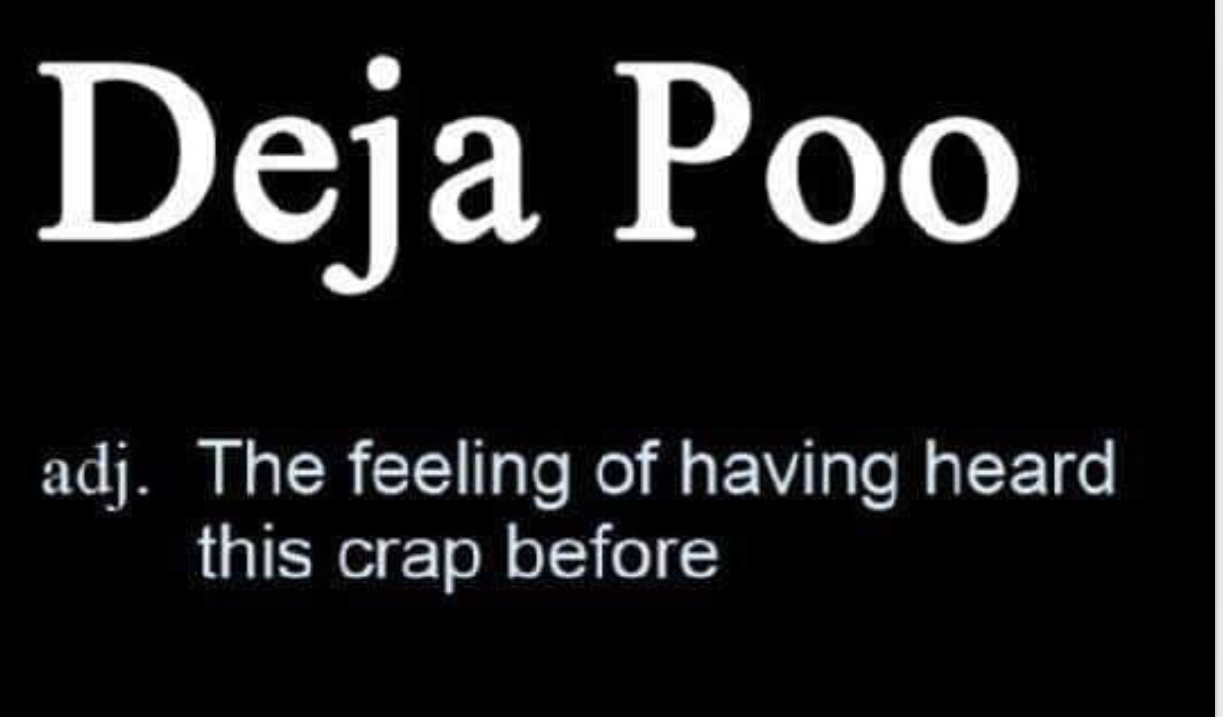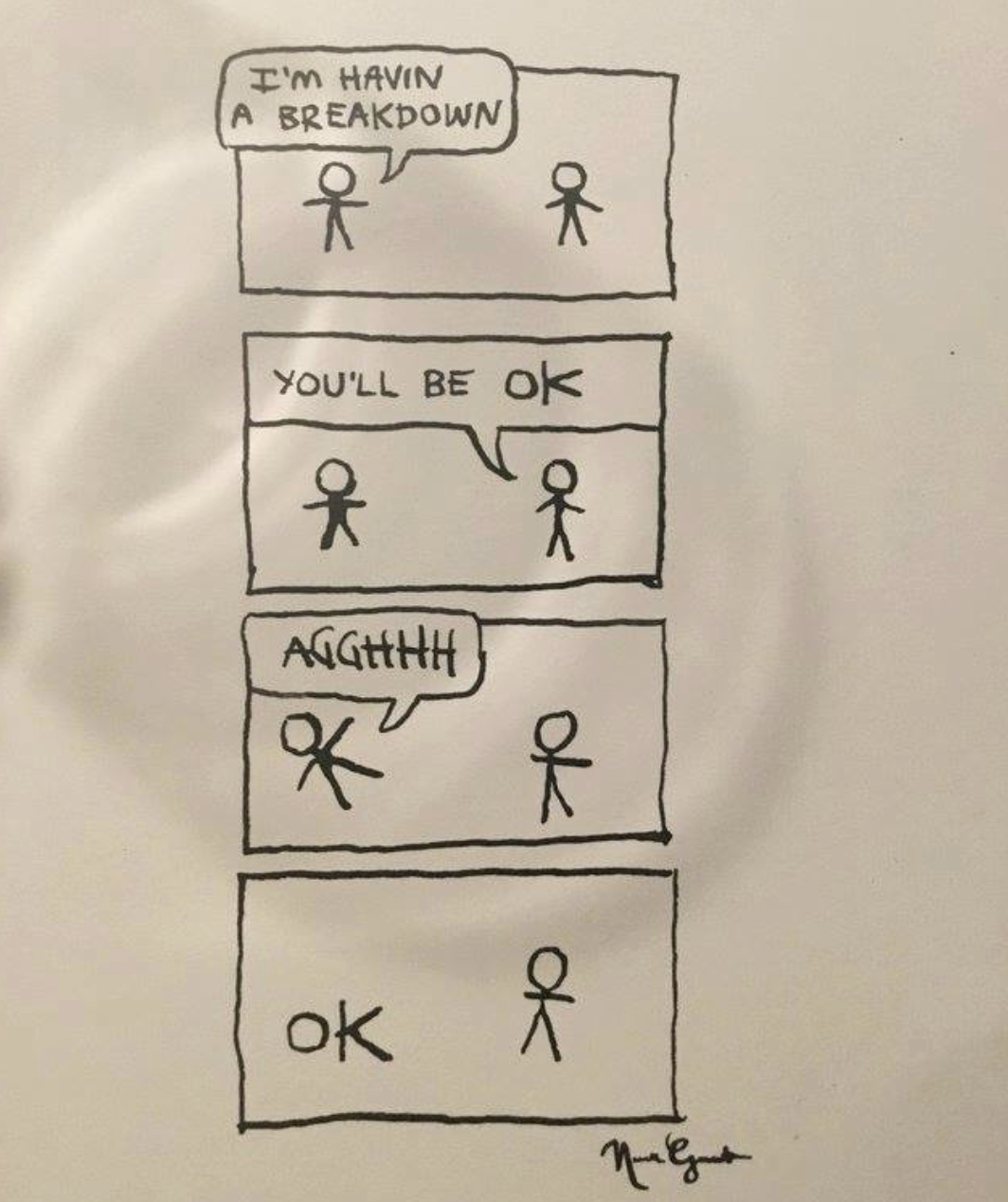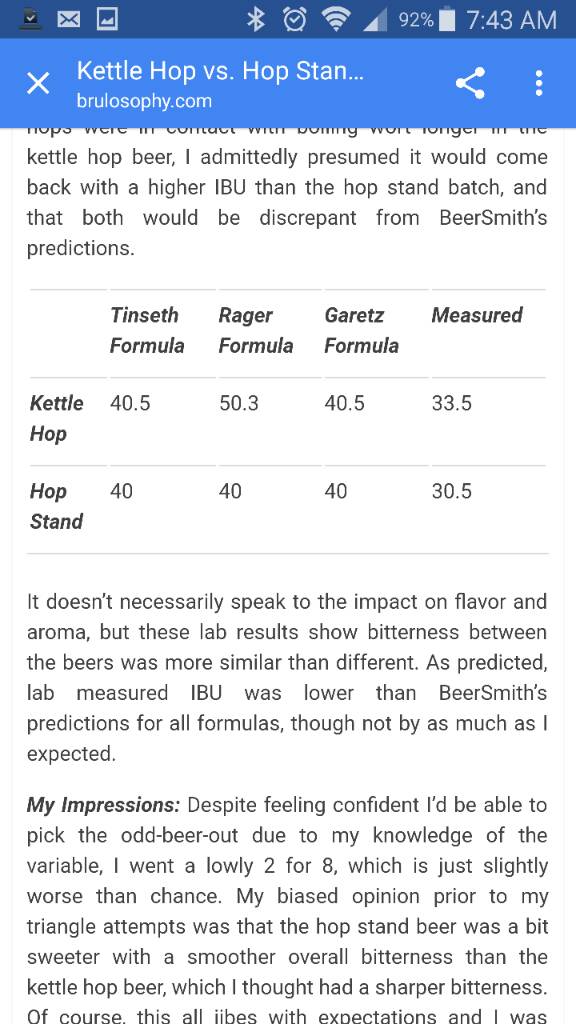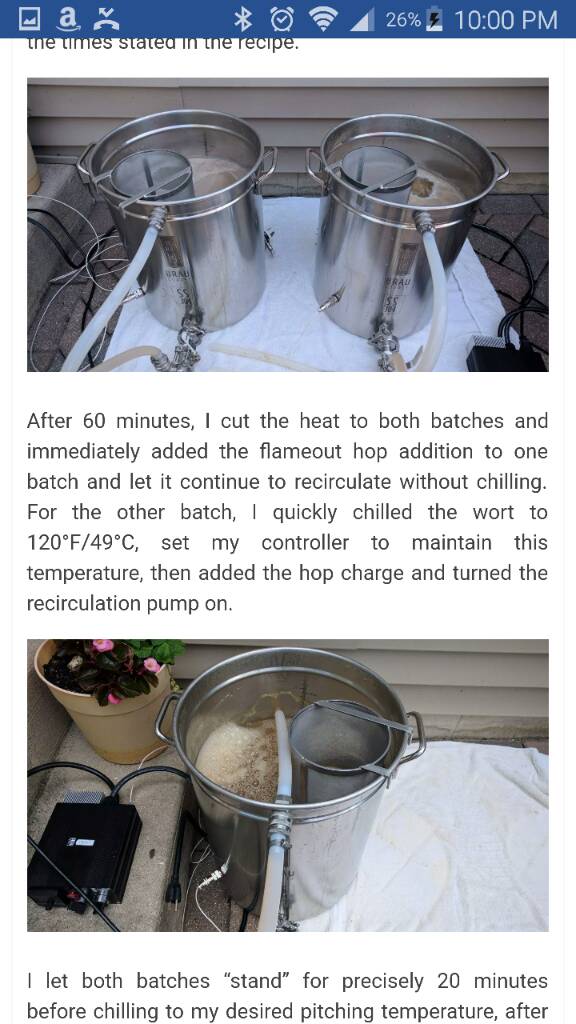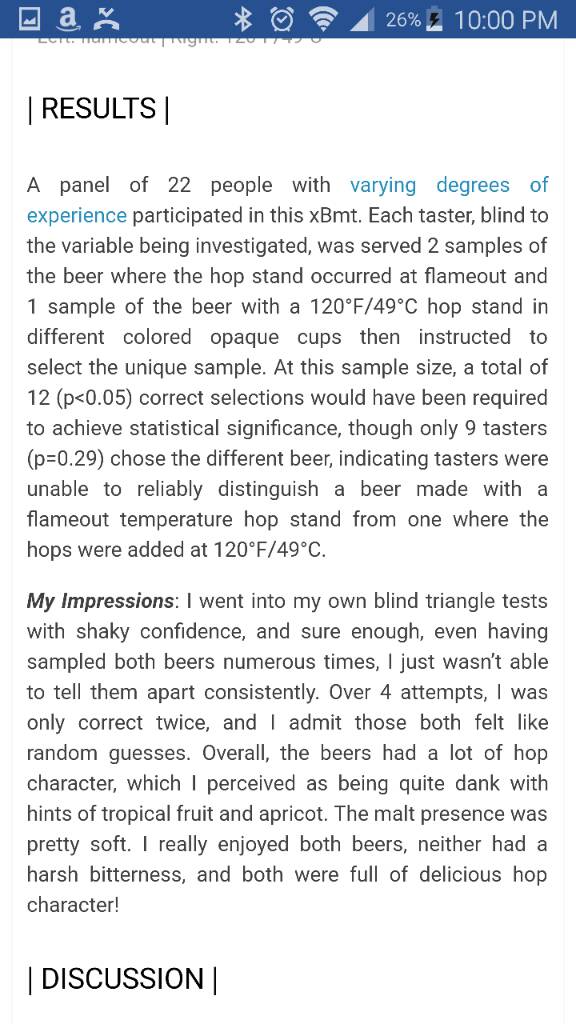This chart was shown to me long ago. It may not be accurate for every hop type. I’ve never seen anything else give what appears to be a definitive efficiency.
Because of it I’ve changed my bittering time to 70 min, my flavor time to 21 and the aroma to 7 unless I only have one late hop addition, which is often dropped at 14 mins.
update (about an hour after my initial post): this new topic at https://www.homebrewersassociation.org/forum/index.php?topic=32784 may be worth a look.
Lots of great beer has been made, is being made, and will continue to be made with hop additions @60, @20, @5, @0. The same can be said for beers with just first wort and hop steep additions.
I first saw that chart five years ago with no source or supporting evidence. It's easy and reasonable to believe it: it matches nicely with the idea of bittering hops @60, flavor hops @20, aroma hops @ 5.
And people brew great beer using this hop schedule. Aside: "Perception and Reality in Beer Flavor with Randy Mosher – BeerSmith Podcast #182" is worth a listen.
Over time, what has made me skeptical about the chart is the steepness of the aroma and flavor curves. I tend to view homebrewing as "cooking": so interactions of ingredients in the kettle do not "start" or "stop" at specific temperatures or at specific times. And these interactions will likely occur before and after the boil.
For me, any model that doesn't take this into account is suspect.
Some recent science / "citizen science" for to consider.
"The IBU is a LIE! Kind of....." (
https://www.experimentalbrew.com/experiments/writeups/ibu-lie-kind):
wort chill time impacts bitterness:
Here’s the big takeaway – remember the foreshadowing a few pages back about process – we think the “undershoot” is due to today’s more rapid chilling procedures than were common during the formula’s development.
boil temperature impacts bitterness. It's mentioned here
At least one brewer was also playing with a new electric rig that had a lower “boil” temp that possibly compounded the miss [vs classic IBU estimating techniques].
Also, Stan Hieronymus's Hop Queries newsletter has an article on boiling at high altitude (lower temperatures) which 'confirms' that bitterness (IBUs) is extracted from hops at temperatures below 212* F / 100* C.
For hop flavors/aromas, a couple of "citizen science" test batches should offer evidence that temperature has as much of an impact as time.
Basic Brewing Radio has performed a number of hop tasting shows over the last year. The base recipe is simple and intended to produce six bottles of beer using a one gallon carboy. IIRC, the recipe is
- 3 quarts water,
- 1 pound light DME
- bring the wort to a boil, turn off heat
- add 1 oz hops
- let the kettle sit (off the heat) for 15 or 20 minutes
- chill rapidly
For me, this will result in a beer that's similar to a beer with hops added @60 / @20, and @5.
The "November 1, 2018 - IBUs vs Wort Gravity and Hop Stand Temps" of Basic Brewing Radio is worth a listen for those who want to try to estimate IBUs with just hop steep additions.
Let's take the BBR base recipe, and adjust it to do just a hop steep:
- 3 quarts water,
- 1 pound light DME
- bring the wort to a boil, turn off heat, chill to 180* F
- add 1 oz hops
- let the kettle sit (at 180* F) for 15 or 20 minutes
- chill rapidly
For variations, try this at a lower temperature (170, ...) and for longer times.
For me, this is enough science / 'citizen science' to
suggest that modeling (or estimating) hop bitterness/flavors/aromas requires time and temperature.
Models (and estimates) for homebrewing don't have to be correct to be useful. But when older models conflict with newer information, it can be fun to set those older models aside. And regardless of the validity of the diagram, great beer will continue to be made with recipes that use 1) hop additions @60, @25, @5 or 2) just first wort and whirlpool hop additions, or 3) many timing variations in between.

















![Craft A Brew - Safale S-04 Dry Yeast - Fermentis - English Ale Dry Yeast - For English and American Ales and Hard Apple Ciders - Ingredients for Home Brewing - Beer Making Supplies - [1 Pack]](https://m.media-amazon.com/images/I/41fVGNh6JfL._SL500_.jpg)







































